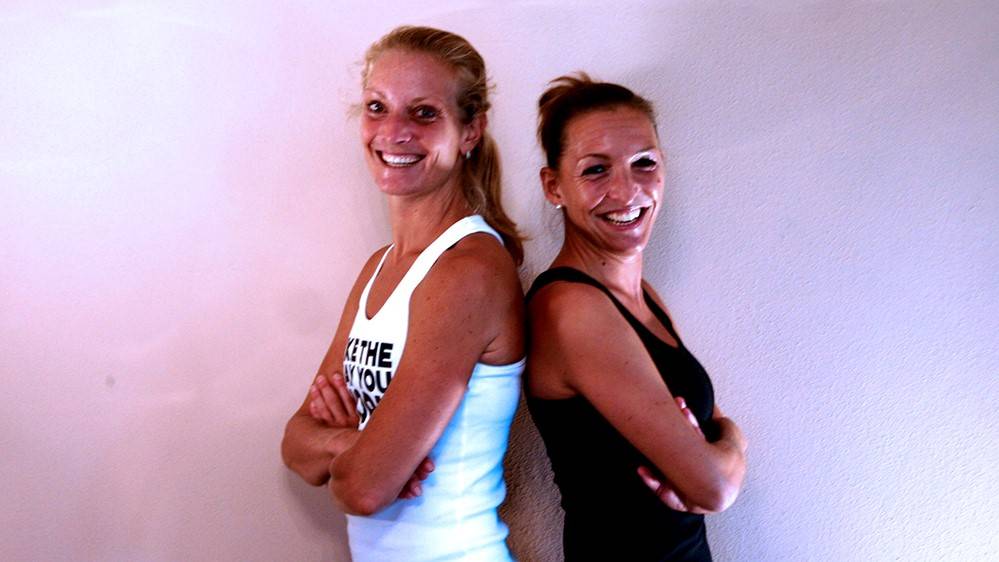The swimmer's sorrow: the shoulder pain
The frequently occurring swimmer's shoulder is a collective term for several orthopedic changes in the shoulder joint and the surrounding structures. In addition to the most common impingement syndrome, swimmers often suffer from muscle shortening, changes in the cervical spine and inflammation of the bursa and tendons.
Impingement syndrome is painful tightness in the shoulder joint. This occurs when the tendon of the supraspinatus muscle is trapped between the acromion and the humeral head as a result of overhead activity and overload.
In order to avoid problems in the shoulder joint during swimming training, it is important to ensure proper technique and a good position in the water. If you still experience shoulder pain, the following exercise program can help to reduce it.
Training recommendation:
Exercise #1: Warm Up
We carry out our warm-up with a foam roller, tennis ball or massage ball. The aim is to loosen the fascia of the shoulder-encompassing muscles with the help of the fascia roller and the fascia ball (tennis ball is also suitable) in order to increase the joint play of the shoulder joint.
Chest muscle (pectoralis) with the ball
Deltoid with standing roll
Back (latissimus and serratus) with roll while lying down
Exercise #2: MovementPrep:
MovementPrep increases the core body temperature and actively directs the muscles so that they become more flexible over the long term. It improves balance and proprioception and is the best formula for increased mobility, flexibility, stability and strength (Mark Verstegen: Core Performance). The aim is to improve the mobility of the thoracic spine in the rotation and expansion of the shoulder girdle and shoulder joint.
Exercise #3: Exercises specifically designed to strengthen the shoulders
Muscles that are too weak in the shoulder blade area usually result in a rounded back. This restricts upward movement in the shoulder joint. This should be counteracted by strengthening the rhomboids in order to avoid tightness in the shoulder joint through an optimal position of the shoulder blades.
Exercise #4: Our exercise for targeted strengthening: rowing with TRX ropes.
The exercise is carried out in two phases:
1st phase: Draw and release the shoulder blades with stretched arms
2nd phase: pull the shoulder blades in, bend the elbows, straighten the elbows, release the shoulder blades (relax the rhomboids)
Increasing the exercise: change your standing position (body tilt), one-legged
Note especially when increasing: When performing the exercise, pay attention to core stability. The body should form a line.
Strength endurance range: approx. 20 repetitions, 3 sets
Exercise #5: to relieve (enlarge) the space in the shoulder joint between the acromion and the humeral head
For this we use eccentric training of the shoulder adductors with the Theraband. The Theraband is attached at the top, for example with a knot on the door. The stand is on the side next to the Theraband, the arm is raised 90 degrees. Now, with your elbow stretched, you quickly bring your arm down towards your body, working against the resistance of the Thera-band for about a second. Then slowly return to the starting position (4 seconds).
Strength endurance range: approx. 20 repetitions, 3 sets, per side
Note: When performing the exercise, it is important that the shoulder blades are held back and down (towards the trouser pockets). The upper body should remain stable!
Exercise #6: Stabilization and proprioception of the shoulder joint
For this exercise we use the pezzi ball. While standing, you support yourself against the pezzi ball. The arm is extended forward and you hold this position for up to 3 x 15-20 seconds.
Increases in exercise:
- Change standing position (body tilt)
- one-legged
- Personal fitness trainer gives impulses on the ball
Note for all variants: Pull the shoulder blades back and down, core tension
Exercise #7: Cool Down: "Pretzel Stretch"
Lie sideways on the mat, resting your head on a roller or pillow if necessary. The lower leg is now bent backwards and held at the ankle with the arm lying on top (not at the tips of the toes). Bend the leg that is on top forward and fix the knee with the lower arm. The upper body actively rotates backwards.




















